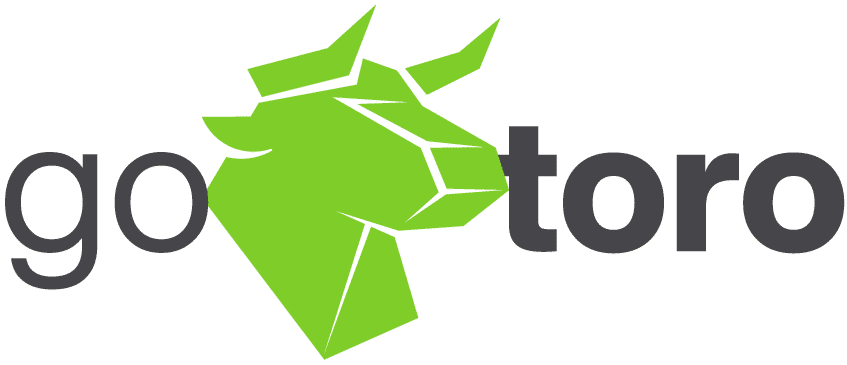The world of healthcare is perpetually in motion, and its hiring landscape is no exception. As we step into 2024, it’s crucial to navigate these changes with a keen understanding of the latest healthcare hiring trends. These trends are not just statistics; they represent a dynamic shift in how healthcare facilities approach recruitment, how potential employees seek opportunities, and the overall functioning of this vital industry.
Why Understanding Current Trends is Essential
For employers in the healthcare sector, staying abreast of these trends means attracting and retaining the best talent, ensuring a high standard of patient care, and maintaining an edge in an increasingly competitive field. For job seekers, knowledge of these trends opens doors to new opportunities, prepares them for the evolving demands of the job market, and enhances their career development strategies.
A Dynamic Shift in Healthcare Recruitment
As we delve into the intricacies of healthcare hiring trends, our focus is not just on presenting data but on exploring the underlying factors driving these changes. This exploration is essential for anyone connected to the healthcare industry, from seasoned professionals to those just embarking on their careers. Keep reading as we uncover the most significant trends shaping healthcare hiring in 2024 and beyond.
The Impact of Technology on Healthcare Hiring
Technological Advancements Reshaping Recruitment

The infusion of technology into healthcare hiring processes marks one of the most transformative healthcare hiring trends of our era. These technological advancements are not mere tools; they are reshaping the very fabric of recruitment strategies. They are streamlining processes, enhancing efficiency, and opening new avenues for both recruiters and candidates.
AI and Digital Interviews: The New Norm
A prime example of this technological shift is the adoption of Artificial Intelligence (AI) in screening candidates. AI algorithms are now capable of parsing through vast amounts of data to identify the most suitable candidates based on skills, experience, and even potential cultural fit. This level of screening was unimaginable a few years ago but is now a cornerstone in modern healthcare recruitment.
Digital interviews, too, have taken center stage, breaking the barriers of geographical limitations. They enable recruiters to connect with candidates globally, ensuring a diverse and skilled workforce. This is particularly pivotal in healthcare, where the right talent can significantly impact patient outcomes.
Shift Toward Telehealth and Its Implications for Hiring
Rise in Telehealth Services Post-Pandemic
The post-pandemic era has seen a significant shift in healthcare hiring trends, with telehealth services taking a front seat. This transformation, accelerated by the pandemic, has established telehealth as a fundamental part of modern healthcare delivery. It’s a shift that has long-term implications for how healthcare providers approach hiring, marking a definitive turn in the sector’s evolution.
Emerging Roles and Required Skill Sets
The expansion of telehealth has led to the creation of new roles within the healthcare sector. These roles are distinct in their combination of healthcare knowledge and technical proficiency. For instance, Telemedicine Specialists are now in demand, bringing healthcare services to patients remotely. There is also a growing need for IT and Support Staff who can manage the technology that powers telehealth services. Additionally, Patient Care Coordinators are becoming crucial in managing telehealth interactions, ensuring that patients receive seamless care.
The Increasing Need for Specialized Healthcare Professionals
Demand in Specific Healthcare Fields
Among the notable healthcare hiring trends is the escalating demand for specialized healthcare professionals. This trend is particularly evident in areas like geriatric care and mental health services. The aging population has led to an increased need for healthcare professionals who specialize in caring for the elderly. Concurrently, there’s a growing awareness and acknowledgment of mental health issues, which has significantly increased the demand for mental health professionals.
Adaptations in Healthcare Hiring Practices
Healthcare facilities are actively adapting their hiring practices to meet these new demands. This includes a strategic shift towards targeted recruitment, aiming to attract professionals with specific skill sets relevant to emerging healthcare needs. Facilities are also investing in enhanced training programs, equipping their current staff with the skills necessary to address these specialized areas. Furthermore, the adoption of flexible hiring models, including varying employment types like part-time, full-time, and contract roles, is helping to attract a diverse range of professionals suited to these evolving roles.
The Role of Education and Continuous Training
Evolving Educational Requirements for Healthcare Professionals
Education plays a pivotal role in shaping healthcare hiring trends. As the healthcare landscape evolves, so do the educational requirements for professionals within the field. There is an increasing emphasis on specialized education that aligns with the demands of contemporary healthcare. For instance, programs focusing on geriatric care, mental health, and telemedicine are becoming more prevalent and essential. This shift in educational focus ensures that upcoming healthcare professionals are well-equipped to meet the specific needs of diverse patient populations.
Importance of Ongoing Training and Certifications
Continuous training and certification are equally critical in the rapidly evolving healthcare sector. Ongoing education ensures that current healthcare workers remain abreast of the latest developments, techniques, and technologies in their field. Certifications in specialized areas not only enhance a professional’s skill set but also their employability, aligning with the current healthcare hiring trends that favor specialization. This emphasis on continuous learning and development is crucial for maintaining high standards of care and responding effectively to the dynamic nature of healthcare challenges.
The Rise of Remote Healthcare Jobs
Expansion of Telehealth Services and Its Impact on Hiring Patterns

A significant element in the current healthcare staffing trends is the expansion of telehealth services, which has fundamentally altered hiring patterns in the healthcare industry. The demand for telehealth services has skyrocketed, not only in response to global health crises but also due to its convenience and effectiveness. This surge has led to a greater need for healthcare professionals who can deliver services remotely, creating a whole new dimension in healthcare hiring trends. Telehealth’s rise necessitates a different approach to staffing, with an emphasis on remote work capabilities and digital literacy.
Roles Transitioning to Remote Work Arrangements
As telehealth continues to grow, various roles within the healthcare sector are increasingly moving towards remote work arrangements. This includes positions like:
- Telemedicine Physicians and Nurses, who provide patient consultations and care remotely.
- Remote Patient Monitoring Specialists, who track and analyze patient data from afar.
- Behavioral Health Therapists, offering mental health services via online platforms.
- These roles illustrate a broader shift in healthcare employment, where remote work is becoming more prevalent and sought-after.
Emphasis on Soft Skills and Emotional Intelligence
The Growing Importance of Non-Technical Skills in Healthcare
In the realm of healthcare hiring trends, there’s an escalating emphasis on soft skills and emotional intelligence. Technical expertise, while crucial, is no longer the sole focus. Healthcare employers are increasingly valuing skills like empathy, communication, adaptability, and teamwork. These soft skills are essential in providing patient-centered care and working effectively in diverse, interdisciplinary teams.
Adapting Hiring Processes for Soft Skills Evaluation
As a result, hiring processes in the healthcare sector are evolving to better evaluate these non-technical skills. Interviews and assessments are being designed to gauge emotional intelligence, problem-solving abilities, and interpersonal skills. This shift reflects a broader trend in healthcare staffing trends, recognizing the integral role of soft skills in high-quality healthcare delivery.
Shifts in Compensation and Benefits
Changing Salary Trends for Healthcare Professionals
Healthcare hiring trends are also seeing shifts in compensation structures. Competitive salaries remain a key factor in attracting and retaining talent. However, the industry is experiencing changes in how healthcare professionals are remunerated. There’s a growing recognition of the need to compensate healthcare workers commensurately with their skills, especially those in specialized or high-demand areas like telehealth and mental health services.
Evolution of Benefits Packages
Additionally, there’s a notable evolution in benefits packages offered to healthcare professionals. Employers are increasingly including benefits that address mental health support, offer better work-life balance, and provide opportunities for professional growth and development. Benefits such as flexible scheduling, wellness programs, and continued education opportunities are becoming more commonplace. This evolution in benefits reflects a deeper understanding within healthcare staffing trends of the importance of supporting the holistic well-being of healthcare workers.
Diversity and Inclusion in Healthcare Hiring

Trends and Goals in Diversity and Inclusion
In the realm of healthcare staffing trends, diversity and inclusion have taken center stage. Healthcare organizations are increasingly recognizing the value of a diverse workforce in enhancing patient care, fostering innovation, and creating a more inclusive environment. Current trends indicate a concerted effort towards not just hiring a diverse range of employees but also nurturing an inclusive workplace culture where all employees feel valued and supported.
Healthcare facilities are setting explicit goals for diversity and inclusion. This involves not only meeting certain demographic quotas but also ensuring that diverse voices are heard and respected at all levels of the organization. The aim is to mirror the diverse patient populations they serve, leading to improved patient outcomes and employee satisfaction.
Initiatives to Promote Diversity
To achieve these goals, various initiatives and programs are being implemented, such as:
- Bias-awareness training for hiring managers.
- Partnerships with educational institutions to encourage a diverse pipeline of healthcare professionals.
- Mentorship programs focused on supporting underrepresented groups within the healthcare workforce.
- These initiatives are critical components of the evolving healthcare staffing trends, ensuring that diversity and inclusion are more than just buzzwords in the healthcare sector.
Challenges and Solutions in Healthcare Hiring
Understanding the Challenges in Healthcare Staffing
In the landscape of healthcare staffing trends, several challenges persistently arise, notably staffing shortages and high turnover rates. The healthcare industry often struggles with a gap between the available workforce and the growing demand for healthcare services. This disparity can lead to overworked staff and, consequently, decreased job satisfaction and increased turnover rates. Moreover, the high-stress nature of many healthcare jobs exacerbates these issues, leading to burnout and further compounding the challenge of retaining skilled professionals.
Strategies to Navigate Hiring Challenges
To navigate these challenges, healthcare organizations are adopting innovative strategies. A key approach involves strengthening recruitment efforts. This means not just expanding the reach of recruitment campaigns but also embracing modern recruitment tools like social media platforms and virtual job fairs to connect with a broader audience.
Another critical strategy is enhancing employee retention. This can be achieved by offering competitive compensation and comprehensive benefits packages, along with creating opportunities for professional growth and advancement within the organization. Such measures can significantly boost job satisfaction and loyalty among existing staff.
Investing in the well-being of employees is also essential. Implementing programs that focus on mental health, ensuring work-life balance, and providing resources for stress management can help in reducing burnout rates and improving overall job satisfaction.
Lastly, the utilization of flexible staffing models is gaining traction as a solution to manage staffing shortages more effectively. These models, such as float pools and travel nursing arrangements, offer the flexibility and adaptability needed to address fluctuating staffing needs, thereby ensuring consistent patient care without overburdening permanent staff.
Predictions for the Future of Healthcare Hiring
Forecasting Beyond 2024
As we look beyond 2024, healthcare staffing trends are expected to continue evolving in response to technological advancements, demographic shifts, and changing patient needs. Experts predict an increased integration of technology in healthcare hiring processes, with AI and machine learning playing a more significant role in candidate screening and selection. Furthermore, the demand for professionals skilled in telehealth, digital health, and personalized medicine is anticipated to rise.
Another key prediction is the growing emphasis on soft skills and emotional intelligence in healthcare roles. As patient-centered care becomes more prevalent, the ability to empathize and communicate effectively with patients will be highly valued.
Influencing Current Hiring Strategies
These predictions are not just futuristic forecasts; they have immediate implications for current hiring strategies. Healthcare organizations are encouraged to start adapting now, by investing in technology, focusing on continuous education and training for their workforce, and placing a greater emphasis on soft skills during the hiring process.
As we navigate the complex and evolving landscape of healthcare hiring in 2024, it’s clear that staying informed and adaptable is key. From the integration of AI and digital tools in recruitment processes to the rise of telehealth and the growing importance of specialized roles, these trends are reshaping how healthcare facilities and professionals approach employment. Embracing these changes, including the strategic use of programmatic job advertising, is essential for attracting and retaining top talent, ensuring high-quality patient care, and maintaining a competitive edge in this vital industry – request a demo today.


